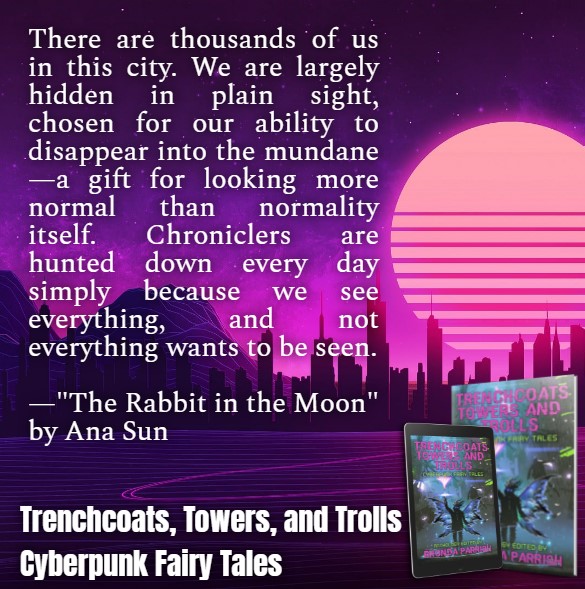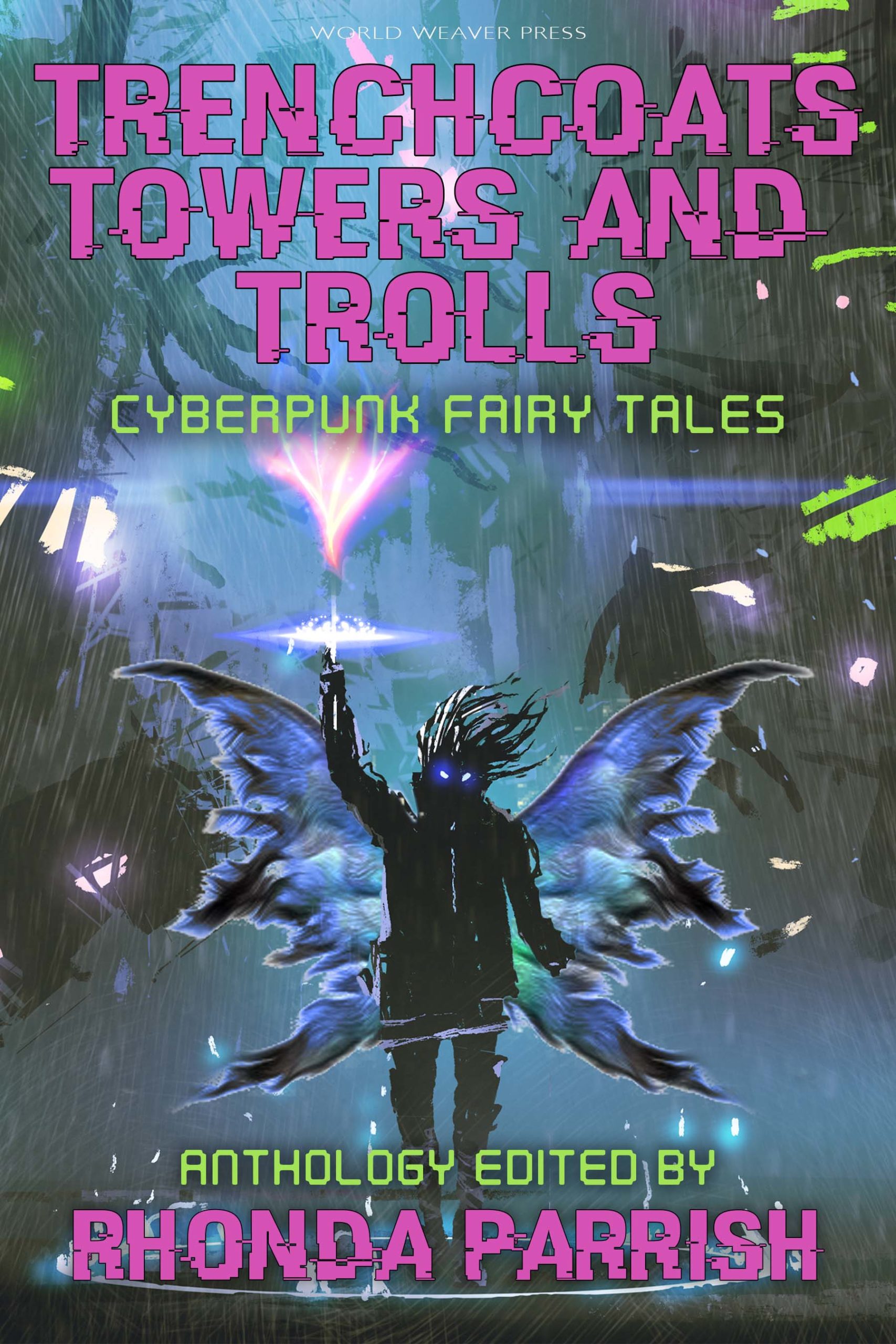Trenchcoats, Towers and Trolls, which came out just this week, includes Ana Sun’s story, “The Rabbit in the Moon”. To help celebrate that release, Ana is here at my blog to talk a wee bit about what inspired it. This post contains some of her inspirations, a bit about hope and also a secret.
Enjoy!

Inspiration, Hope and a Secret
by Ana Sun
Cyberpunk worlds aren’t usually happy places. They tend to be oppressive technocracies, where people like you and me would probably have very little free will. But then, neither are fairy tales—we’d probably wouldn’t last all that long before being cursed by a witch or eaten by a wolf.
Yet something about the juxtaposition of “cyberpunk” and “fairy tales” summoned me and blinked at me like a full-height, hi-res advertisement in Shinjuku, and I knew I had to write something for Rhonda Parrish’s Trenchcoats, Towers and Trolls. The challenge was just too good to resist.
Next dilemma: which fairy tale? I knew I didn’t want to choose a story from the catalogues of the Brothers Grimm or Hans Christian Andersen. While I grew up with these stories like many other post-colonial children—and loved them—there are so many other folktales that don’t get airtime.
One of my personal goals as a writer is to be truer to my messy identity. A third culture kid who wanted to experience the world, I never made it “home” because “home” no longer made sense. This anthology presented the perfect opportunity for me to reconcile my love for lore, passion for science—and to embrace my uprooted, fragmented self.
The visual aesthetic of cyberpunk today is heavily influenced by Bladerunner, which, Ridley Scott apparently borrowed from “the landscape of Hong Kong on a bad day”. It seemed apt to find a story of Asian origins, which could be transported into a high-tech, futuristic urban setting.
Many non-Western folktales I recall from childhood suffer the same issues as fairy tales; they no longer reflect today’s acceptable values. Others are directly linked to physical landmarks, which would be difficult to translate into the cyberpunk genre without the risk of losing the significance of the tales entirely. Then, there are folktales which feature animals as main characters.
I wish I could tell you that I got a flash of inspiration for “The Rabbit in the Moon” by looking up at the night sky—but it was nothing as romantic as that. I think it because I’d been playing Tsuki’s Adventure on my phone during those funny little time gaps we get in a day. There, the secret is out.
How does one deal with the existence of sweet, gentle animals in such a gritty, dark world? It was tempting to make the characters into cybernetic creatures or street urchins with animal-shaped tattoos, but then one would lose quality and texture of such a folktale—I wanted to somehow keep the innocence and purity that these stories historically have. And so it became a perfect excuse to examine the concept of what is “normal” in a world where data about everything is collected and AI-analysed for potentially nefarious uses. Sadly, a world that’s not so far from the current reality we live in…
But even in such a world, we can look out for one another, and treat each other with respect as fellow creatures under the same night sky. Therein lies the seeds of hope for a better, kinder world.


